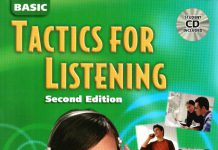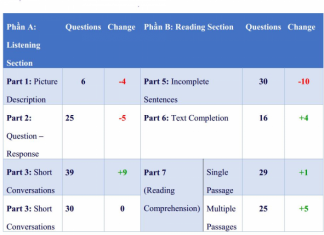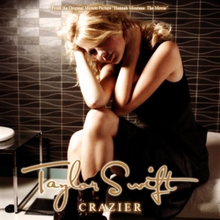ĐOẠN 1
Read the following passage and mark the letter A, B, C, or D on your answer sheet to indicate the correct answer to each of the questions from 1 to 7.
A letter of application is a sales letter in which you are both salesperson and product, for the purpose of an application is to attract an employer’s attention and persuade him or her to grant you an interview. To do this, the letter presents what you can offer the employer, rather than what you want from the job.
Like a résumé, the letter of application is a sample of your work and an opportunity to demonstrate your skills and personality. If
it is written with flair and understanding and prepared with professional care, it is likely to be very effective. While the résumé must be factual, objective, and brief, the letter is your chance to interpret and expand. It should state
explicitly how your background relates to the specific job, and it should emphasise your strongest and most relevant characteristics. The letter should demonstrate that you know both yourself and the company.
The letter of application must communicate your ambition and enthusiasm. Yet it must be modest. It should be neither aggressive nor compliant: neither pat yourself on the back nor ask for sympathy. It should never express dissatisfaction with the present or former job or employer. And you should avoid discussing your reasons for leaving your last job.
Finally, it is best that you not broach the subject on salary. Indeed, even if a job advertisement requires that you mention your salary requirements, it is advisable simply to call them “negotiable.” However, when you go on an interview, you should be prepared to mention a salary range. For this reason, you should investigate both your field and, if possible, the particular company. You don’t want to ask for less than you deserve or more than is reasonable.
(Adapted from “Select Readings – Intermediate” by Linda Lee and Erik Gundersen)
Question 1: What is the passage mainly about?
- Advice on how to find a good job
- Things to avoid during a job interview
- Tips for writing an effective letter of application
- Differences between a résumé and a letter of application
Question 2: According to paragraph 1, in a letter of application, the applicant tries to______.
- persuade the employer to grant him/her an interview
- get further information about the company
- advertise a product to attract more customers
- present what he/she wants from the job
Question 3: The word “it” in paragraph 2 refers to ______.
- the letter of applicationB. an opportunity
- your workD. the résumé
Question 4: The word “
explicitly” in paragraph 2 is closest in meaning to ______.
- clearlyB. shortly
C. slightly
D. quickly
Question 5: According to the passage, which of the following is TRUE about a letter of application?
- It should express the applicant’s dissatisfaction with his/her former employer.
- It should refer to the applicant’s reasons for leaving his/her previous job.
- It should be written very briefly, but in a formal style.
- It should expand upon the information contained in the applicant’s résumé.
Question 6: The word “
broach” in paragraph 4 is closest in meaning to ______.
- avoidB. investigate
C. introduce
D. understand
Question 7: According to paragraph 4, in a job interview, the applicant should be ready to ______.
- accept any salary offeredB. negotiate working conditions
- mention their expected salary rangeD. talk about the company’s budget
ĐOẠN 2
Read the following passage and mark the letter A, B, C, or D on your answer sheet to indicate the correct answer to each of the questions from 8 to 15.
Henry is the undisputed star of Dronfield School near Sheffield. Whatever the achievements of other members of the comprehensive school, it is Henry, with his soulful eyes and glossy hair, who has hogged the lim, appearing on television in Britain and abroad. Yet despite all the public
adulation, Henry stirs up no envy or resentment among the 2000 students – in fact, they all adore him. The dog, who first arrived six months ago, is a super dog, who has improved students’ behaviour and encouraged more students to focus on their academic achievement.
Andrew Wainwright, a student at Dronfield School, says there is something magical and calming about being able to interact with Henry during his time at the school’s catch-up classes, and that if he falls behind, that opportunity will be denied. Even doubting staff have finally been won round. Perhaps that is because Henry, who lies on the floor during staff meetings, has also had a calming effect on them.
It was Andrew’s teacher, Wendy Brown and the school counsellor, Julie Smart, who first proposed buying a school dog. “Julie and I were talking one day about how looking after dogs can positively affect children’s conduct,” says Brown. “We did some research and discovered that the presence of pets has been shown to be therapeutic. A number of studies have shown that animals improve recovery after surgery or illness and have a calming influence on people in a lot of settings. Some of my kids can be a handful and some of the children Julie counsels have terrible problems.”
Could the school dog become a craze? Other schools such as the Mulberry Bush, a primary school for children with behavioural problems, have stepped forward to point out they already have one. Rosie Johnston, a Mulberry staff member has been bringing her golden retriever, Muskoka, into school for three years. Apart from being a calming influence, Muskoka even plays his part in literacy lessons. Children at the school can be too shy to read to adults so they read to Muskoka. “Their anxiety about mispronouncing something or getting the words in the wrong order is reduced when they read to him,” says Johnston.
Psychologist Dr Deborah Wells from Queen’s University Belfast specialises in animal-human interaction. She believes that the underlying key to the Henry effect is that dogs offer unconditional love and that cheers up adults and children and helps with self-esteem. But traditionalist Chris Woodhead, the former chief inspector of schools says, “I don’t see why a teacher cannot create a positive learning environment through the subject they teach and their personality. Dogs strike me as a bit of a publicity stunt. It’s the kind of sentimental story journalists love.” Despite this sentiment, Henry remains as popular as ever.
(Adapted from “Ready for Advanced” by Roy Norris and Amanda French with Miles Hordern)
Question 8: Which of the following best serves as the title for the passage?
- Having School Dogs: Pros and ConsB. Henry – a Super Dog in Dronfield School
- School Dogs: Useful Classroom AssistantsD. Keeping School Dogs – a Prevalent Trend
Question 9: The word “adulation” in paragraph 1 is closest in meaning to ______.
- excessive admirationB. deserved attention
- considerable controversyD. unrealistic expectation
Question 10: The phrase “a handful” in paragraph 3 is probably descriptive of a child who is ______.
- difficult to controlB. reluctant to explore
- inclined to disagreeD. impossible to understand
Question 11: Which of the following is mentioned in paragraph 3 as a potential impact of keeping a pet?
- A stronger tendency to misbehaveB. Better recovery from illness
- A greater desire to influence othersD. Long-term changes in conduct
Question 12: The word “one” in paragraph 4 refers to _______.
- a school dogB. a craze
- a Mulberry staff memberD. a primary school
Question 13: According to paragraph 4, which of the following is one of the roles played by Muskoka at the Mulberry Bush?
- Minimising the number of words mispronounced by its students
- Helping its students to reduce their fear of making mistakes
- Relieving its teaching staff of unnecessary workload
- Encouraging a more proactive approach to teaching literacy
Question 14: Which of the following best summarises Chris Woodhead’s viewpoint in paragraph 5?
- Teachers underestimate the role of dogs in literacy lessons.
- Schools have dogs just to attract media attention.
- Students and dogs are inseparable companions in the classroom setting.
- Dogs are capable of enlivening classroom atmosphere.
Question 15: Which of the following is implied in the passage?
- Rosie Johnston is more experienced than Wendy Brown in working with animals.
- Interaction with Henry is used to boost students’ learning motivation at Dronfield School.
- Administrators at Dronfield School are sceptical as to whether Henry’s companion will benefit their students.
- Wendy Brown and Julie Smart are dedicated animal rights activists who wish to get their message across to young people.
ĐOẠN 3
Read the following passage and mark the letter A, B, C, or D on your answer sheet to indicate the correct answer to each of the questions from 16 to 22.
There are many African tribes but, for many people, the Masai are the most well-known. They are famous for their bright red clothing and their ceremonies with lots of music and dancing. Probably, one of the most colorful ceremonies is the festival of “Eunoto,” when the teenage boys of the Masai become men.
Eunoto lasts for many days and Masai people travel across the region to get to a special place near the border between Kenya and Tanzania. The teenage boys who travel with them are called “warriors.” This is a traditional name from the past when young men fought with other tribes.
At the beginning of the ceremony, the teenagers paint their bodies while their mothers start to build a place called the “Osingira,” a sacred room in the middle of the celebrations. Later, the senior elders from different tribes will sit inside this place and, at different times, the boys go inside to meet them. Later in the day, the boys run around the Osingira, going faster and faster each time.
The teenagers also have to alter their appearance at Eunoto. Masai boys’ hair is very long before the ritual but they have to cut it off. In Masai culture, hair is an important symbol. For example, when a baby grows into an infant, the mother cuts the child’s hair and gives the child a name. At a Masai wedding, the hair of the bride is also cut off as she becomes a woman. And so, at Eunoto, the teenage boy’s mother cuts his hair off at sunrise.
On the final day, the teenagers meet the senior elders one more time. They get this advice: “Now you are men, use your heads and knowledge.” Then, people start to travel back to their homes and lands. The teenagers are no longer warriors. They are adult men and now they will get married and have children. Later in life, they will be the leaders of their communities.
(Adapted from “Life” by John Hughes, Helen Stephenson and Paul Dummett)
Question 16: What is the passage mainly about?
- The ceremony that marks the beginning of Masai boys’ adulthood
- The journey by Masai teenage boys to the festival of Eunoto
- The importance of Eunoto in African people’s lives
- The reasons for the Masai’s popularity over other African tribes
Question 17: The word “
warriors” in paragraph 2 mostly means ______.
- dancersB. fighters
C. musicians
D. travellers
Question 18: The word “
them” in paragraph 3 refers to ______.
- different tribesB. their mothers
C. the boys
D. the senior elders
Question 19: According to paragraph 3, the Osingira is built by ______.
- the Masai senior eldersB. Masai teenagers
- the Masai teenage boys’ mothersD. Masai men
Question 20: The word “
alter” in paragraph 4 is closest in meaning to ______.
- differB. change
C. maintain
D. distinguish
Question 21: According to the passage, what do the teenage boys do at Eunoto?
- Painting their bodiesB. Receiving new names
- Changing their clothesD. Fighting with other tribes
Question 22: According to the passage, which of the following is TRUE?
- The Masai teenage boys are given advice from senior elders before attending Eunoto.
- The Masai teenage boys will become adults and get married after attending Eunoto.
- Eunoto lasts for a day across the region between Kenya and Tanzania.
- Eunoto is the ceremony for both Masai teenage boys and girls.
ĐOẠN 4
Read the following passage and mark the letter A, B, C, or D on your answer sheet to indicate the correct answer to each of the questions from 23 to 30.
In this modern world where closed-circuit television (CCTV) cameras are everywhere and smartphones in every pocket, the routine filming of everyday life is becoming pervasive. A number of countries are rolling out body cams for police officers; other public-facing agencies such as schools, councils and hospitals are also experimenting with cameras for their employees. Private citizens are getting in on the act too: cyclists increasingly wear headcams as a deterrent to aggressive drivers. As camera technology gets smaller and cheaper, it isn’t hard to
envisage a future where we’re all filming everything all the time, in every direction.
Would that be a good thing? There are some obvious potential upsides. If people know they are on camera, especially when at work or using public services, they are surely less likely to misbehave. The available evidence suggests that it discourages behaviours such as vandalism. Another upside is that it would be harder to get away with crimes or to evade blame for accidents.
But a world on camera could have subtle negative effects. The deluge of data we pour into the hands of Google, Facebook and others has already proved a mixed blessing. Those companies would no doubt be willing to upload and curate our body-cam data for free, but at what cost to privacy and freedom of choice?
Body-cam data could also create a legal minefield. Disputes over the veracity and interpretation of police footage have already surfaced. Eventually, events not caught on camera could be treated as if they didn’t happen. Alternatively, footage could be faked or doctored to dodge blame or incriminate others.
Of course, there’s always the argument that if you’re not doing anything wrong, you have nothing to fear. But most people have done something embarrassing, or even illegal, that they regret and would prefer they hadn’t been caught on film. People already censor their social media feeds – or avoid doing anything incriminating in public – for fear of damaging their reputation. Would ubiquitous body cams have a further chilling effect on our freedom?
The always-on-camera world could even threaten some of the attributes that make us human. We are natural gossips and backbiters, and while those might not be desirable behaviours, they oil the wheels of our social interactions. Once people assume they are being filmed, they are likely to clam up.
The argument in relation to body-cam ownership is a bit like that for guns: once you go past a critical threshold, almost everyone will feel they need one as an insurance policy. We are nowhere near that point yet – but we should think hard about whether we really want to say “lights, body cam, action.”
(Adapted from https://www.newscientist.com)
Question 23: What does the passage mainly discuss?
- The current public obsession with modern technology
- The ubiquity of cameras and ensuing problems
- Legal disputes fuelled by body-cam data
- Data overload experienced by social network users
Question 24: The word “envisage” in paragraph 1 is closest in meaning to ______.
- embraceB. fantasise
C. reject
D. visualise
Question 25: As mentioned in paragraph 2, misbehaviour can be discouraged if potential offenders ______.
- are aware of being filmed at the time
- know that they may be subjected to criticism
- realise that they may be publicly punished
- are employed in the public sector
Question 26: The phrase “a mixed blessing” in paragraph 3 probably means ______.
- something that is neither good nor bad
- something that produces unexpected results
- something that has both advantages and disadvantages
- something either negative or positive in nature
Question 27: What does the author imply in paragraph 3?
- Body-cam ownership could eventually give rise to information overload, which, in turn, raises public concern.
- Social networks provide their users with greater freedom of choice while depriving them of their privacy and anonymity.
- Companies like Facebook may have their own intentions behind their willingness to take care of their users’ body-cam data.
- Google and similar enterprises tend to refrain from harvesting their customers’ data for illicit purposes.
Question 28: It is stated in paragraph 4 that unrecorded events ______.
- may go unnoticed or be ignored completely
- could be manipulated to charge innocent people
- should be kept open to interpretation
- could provoke legal disputes among media companies
Question 29: According to paragraph 5, why do social media users already act more carefully online?
- Because they regret doing something illegal.
- Because they disapprove of uncensored social media feeds.
- Because they want to avoid being recognised in public.
- Because they wish to protect their image.
Question 30: The word “they” in paragraph 6 refers to ______.
- wheelsB. social interactions
- desirable behavioursD. people
ĐOẠN 5
Read the following passage and mark the letter A, B, C, or D on your answer sheet to indicate the correct answer to each of the questions from 31 to 37.
Body language is a vital form of communication. In fact, it is believed that the various forms of body language contribute about 70 percent to our comprehension. It is important to note, however, that body language varies in different cultures. Take for example, eye movement. In the USA a child is expected to look directly at a parent or teacher who is scolding him/her. In other cultures the opposite is true. Looking directly at a teacher or parent in such a situation is considered a sign of disrespect.
Another form of body language that is used differently, depending on the culture, is distance. In North America people don’t generally stand as close to each other as in South America. Two North Americans who don’t know each other well will keep a distance of four feet between them, whereas South Americans in the same situation will stand two to three feet apart. North Americans will stand closer than two feet apart only if they are having a confidential conversation or if there is intimacy between them.
Gestures are often used to communicate. We point a finger, raise an eyebrow, wave an arm – or move any other part of the body – to show what we want to say. However, this does not mean that people all over the world use the same gestures to express the same meanings. Very often we find that the same gestures can communicate different meanings, depending on the country. An example of a gesture that could be misinterpreted is sticking out the tongue. In many cultures it is a sign of making a mistake, but in some places it communicates ridicule.
The dangers of misunderstanding one another are great. Obviously, it is not enough to learn the language of another culture. You must also learn its non-verbal signals if you want to communicate successfully.
(Adapted from“Reading Academic English” by Judy Rapoport, Ronit Broder and Sarah Feingold)
Question 31: What is the passage mainly about?
- The significance of non-verbal signals in America
- Misunderstandings in communication
- Interpretations of gestures in different cultures
- Non-verbal communication across cultures
Question 32: According to paragraph 1, when scolded by his/her parent or teacher, an American child is expected to ______.
- stand close to the personB. look directly at the person
- raise his/her eyebrowsD. point a finger at the person
Question 33: The word “
intimacy” in paragraph 2 is closest in meaning to ______.
- enjoymentB. closeness
C. strength
D. agreement
Question 34: The word “
misinterpreted” in paragraph 3 is closest in meaning to ______.
- misbehavedB. misunderstood
C. mispronounced
D. misspelled
Question 35: The word “
it” in paragraph 3 refers to ______.
- an exampleB. making a mistake
C. the country
D. sticking out the tongue
Question 36: As stated in the passage, in order to communicate successfully with people from another culture, it is advisable for a person ______.
- to learn only non-verbal signals of that culture
- to travel to as many countries as possible
- to use the body language of the people from that culture
- to learn both the language and non-verbal signals of that culture
Question 37: Which form of body language is NOT mentioned in the passage?
- postureB. gesture
C. distance
D. eye movement
—
ĐOẠN 6
Read the following passage and mark the letter A, B, C, or D on your answer sheet to indicate the correct answer to each of the questions from 38 to 45.
The green building movement, started in the 1970s as a way to reduce environmental destruction, is changing the way buildings are constructed. In the early years, green builders were a small minority, and their goals of reducing the environmental impact of buildings were considered unrealistic. Now, however, the movement is growing, as builders have been able to take advantage of new technology.
Green builders try to make use of recycled materials, which means less waste in dumps. Also, they reduce environmental impact by reducing the energy requirements of a building. One way is to provide an alternative, non-polluting source of energy. First, with solar panels, it is possible to produce electricity from the rays of the sun. Once installed,they provide energy at no cost and with no pollution.
Another solution is to reduce the amount of energy required in a building. It is possible to cut electricity use noticeably by improving natural lighting and installing low-energy light bulbs. To reduce the amount of fuel needed for heating or cooling, builders also add insulation to the walls so that the building stays warmer in winter and cooler in summer.
One example of this advanced design is the Genzyme Center of Cambridge, the most environmentally responsible office building in America. Every aspect of the design and building had to consider two things: the need for a safe and pleasant workplace for employees and the need to lessen the negative environmental impact. 75 percent of the building materials were recycled materials, and the energy use has been reduced by 43 percent and water use by 32 percent, compared with other buildings of the same size.
In other parts of the world, several large-scale projects have recently been developed according to green building principles. One of these is in Vauban, Germany, in an area that was once the site of army housing. The site has been completely rebuilt with houses requiring 30 percent less energy than conventional ones. These houses, heated by special non-polluting systems, are also equipped with solar panels.
A larger project is under way in China. The first phase of this project will include houses for 400 families built with solar power, non-polluting bricks, and recycled wall insulation. In a second phase, entire neighborhoods in six cities will be built. If all goes well, the Chinese government plans to copy these ideas in new neighborhoods across China.
Green building ideas, on a small or large scale, are spreading. Individuals, companies, and governments are beginning to see their benefits. Not only are they environmentally friendly, green buildings improve living and working conditions and also save money in the long run.
(Adapted from“Advanced Reading Power” by Beatrice S. Mikulecky and Linda Jeffries)
Question 38: Which of the following does the passage mainly discuss?
- Economic benefits of environmentally responsible buildings
- Successful green building projects all over the world
- New technologies applied to constructing office buildings
- An environmentally friendly approach to constructing buildings
Question 39: According to paragraph 1, the environmental goals set by green builders were initially considered unrealistic presumably because ______.
- there was a lack of green builders at the beginning of the 20th century
- the potential applications of technology to constructing green buildings were not recognised then
- the problems of environment destruction were not prevalent at the time
- there was an abundance of natural materials for the construction of conventional buildings
Question 40: The word “they” in paragraph 2 refers to ______.
- rays of the sunB. recycled materials
C. green builders
D. solar panels
Question 41: The word “insulation” in paragraph 3 mostly means ______.
- systems that protect buildings from the sun’s rays
- devices that monitor changes in temperature
- panels that convert solar energy into electricity
- materials that prevent heat loss and absorption
Question 42: What is one common characteristic shared by the Genzyme Center of Cambridge and the project in Vauban, Germany?
- Both were built based on green building principles, which reduces energy use considerably.
- Both took advantage of new insulation technology, which cuts down on construction costs.
- Both were built out of entirely recycled materials instead of conventional ones.
- Both are housing complexes with special, non-polluting heating systems.
Question 43: The phrase “under way” in paragraph 6 mostly means ______.
- being notifiedB. being certified
C. being inspected
D. being launched
Question 44: Which of the following is NOT mentioned in paragraph 7 as a merit of green buildings?
- Improving living conditionsB. Proving more economical eventually
- Being friendly to the environmentD. Increasing work productivity
Question 45: According to the passage, which of the following statements about green buildings is TRUE?
- They are gaining in popularity in different parts of the world.
- They are more economical and produce no pollution.
- They have only been built in technologically developed countries.
- They are environmentally responsible constructions with gardens.
ĐOẠN 7
Read the following passage and mark the letter A, B, C, or D on your answer sheet to indicate the correct answer to each of the questions from 46 to 52.
When we meet people for the first time, we often make decisions about them based entirely on how they look. And of course, we too are being judged on our appearance. Undoubtedly, it’s what’s inside that’s important but sometimes we can send out the wrong signals and so get a negative reaction, simply by wearing inappropriate clothing.
When selecting your clothes each day, it is therefore important to think about who you’re likely to meet, where you are going to be spending most of your time and what tasks you are likely to perform. Clearly, on a practical level, some outfits will be more appropriate to different sorts of activity and this will dictate your choice to an extent. However, there’s no need to abandon your individual taste completely. After all, if you dress to please somebody else’s idea of what looks good, you may end up feeling uncomfortable and not quite yourself.
Some colours bring your natural colouring to life and others can give you a washed-out appearance. Try out new ones by all means, but remember that dressing in bright colours when you really like subtle neutral tones or vice versa will make you feel self-conscious and uncomfortable. You know deep down where your own taste boundaries lie. It may be fun to cross these sometimes, but do take care not to go too far all at once.
Reappraising your image isn’t selfish because everyone who comes into contact with you will benefit. You’ll look better and you’ll feel a better person all round. And if in doubt, you only need to read Professor Albert Mehrabian’s book Silent Messages, which showed that the impact we make on each other depends 55 percent on how we look and behave, 38 percent on how we speak, and only seven percent on what we actually say.
(Adapted from“Expert First” by Jan Bell and Roger Gower)
Question 46: Which could be the best title for the passage?
- Making Your Image Work for You
- Choosing Appropriate Business Suits
- Making Judgements about People’s Appearance
- Creating a Professional Image
Question 47: According to paragraph 1, people can get a negative reaction from others by ______.
- wearing inappropriate clothesB. expressing too strong emotions
- sending out right signalsD. talking about other people’s behaviours
Question 48: The word “outfits” in paragraph 2 mostly means ______.
- types of gesturesB. sets of equipment
- sets of clothesD. types of signals
Question 49: Which of the following is NOT mentioned in paragraph 2 as a factor to be considered when choosing clothes?
- Places you spend time inB. Kinds of tasks you perform
- Other people’s views on beautyD. People you meet
Question 50: The word “others” in paragraph 3 refers to ______.
- taste boundariesB. colours
C.means
D. neutral tones
Question 51: The word “Reappraising” in paragraph 4 is closest in meaning to ______.
- reconsideringB. reapplying
C. reminding
D. recalling
Question 52: According to Professor Albert Mehrabian, the impact we make on each other depends mainly on ______.
- how we look and behaveB. what we read
- what we actually sayD. how we speak
| ĐÁP ÁN | |||||||||
| 1. C | 2. A | 3. A | 4. A | 5. D | 6. C | 7. C | 8. C | 9. A | 10. A |
| 11. B | 12. A | 13. B | 14. B | 15. B | 16. A | 17. B | 18. D | 19. C | 20. B |
| 21. A | 22. B | 23. B | 24. D | 25. A | 26. C | 27. C | 28. A | 29. D | 30. D |
| 31. D | 32. B | 33. B | 34. B | 35. D | 36. D | 37. A | 38. D | 39. B | 40. D |
| 41. D | 42. A | 43. D | 44. D | 45. A | 46. A | 47. A | 48. C | 49. C | 50. B |
| 51. A | 52. A | ||||||||



























